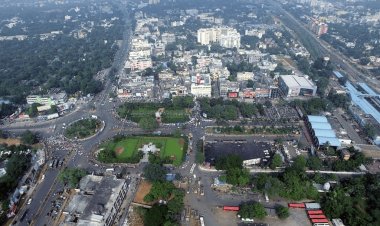Odisha logs 393 fresh Covid cases
On Tuesday, the daily COVID caseload in Odisha remained below 400 for the second consecutive day, with 393 new infections detected from 5,421 samples in the previous 24 hours.

Bhubaneswar: On Tuesday, the daily COVID caseload in Odisha remained below 400 for the second consecutive day, with 393 new infections detected from 5,421 samples in the previous 24 hours.
Sundargarh district had the most new cases (125), followed by Sambalpur (71) and Cuttack. (65).
Here are the new cases broken down by district:
1. Angul: 2
2. Bargarh: 3
3. Balangir: 21
4. Boudh: 6
5. Cuttack: 65
6. Deogarh: 3
7. Dhenkanal: 1
8. Ganjam: 3
9. Jagatsinghpur: 4
10. Jajpur: 1
11. Jharsuguda: 1
12. Kalahandi: 2
13. Kandhamal: 1
14. Kendrapara: 1
15. Khurda: 27
16. Koraput: 3
17. Mayurbhanj: 28
18. Nabarangpur: 3
19. Nayagarh: 3
20. Nuapada: 9
21. Puri: 1
22. Sambalpur: 71
23. Sonepur: 9
24. Sundargarh: 125
The state now has 3,086 active cases, with 339 more patients surviving the disease. The rate of test positivity is 7.2%.
The previous day, Odisha reported 382 new infections after the COVID graph surpassed 500, the highest single-day spike since mid-August last year, with a TPR of 7.5%.
However, the state has seen a decrease in testing over the last two days, compared to 6,000-7,000 samples previously.
In Sambalpur, however, the weekly TPR (April 16 and 22) had risen above 45%. TPR in the western district is 48%, followed by 25% in Subarnapur, 21% in Sundargarh, 14.1% in Kalahandi, and 13.94% in Nuapada.
This year, Odisha has confirmed three COVID deaths. Approximately 1.3% of patients have been hospitalized.
In response to the rising number of cases, the state government has made the use of face masks mandatory in all health facilities. It applies to all healthcare providers on duty, all officials and others present at meetings, during crowding, especially in close quarters, and people providing clinical/laboratory and other support services in the hospital setting. Masks are also required for people visiting areas where there is a high risk of transmission and for people suffering from influenza-like illness.





 user1
user1 









